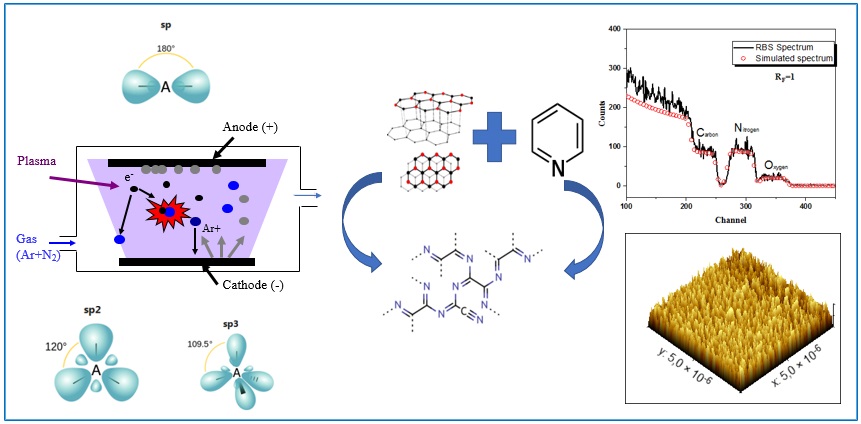Sat, Jul 19, 2025
[Archive]
Volume 20, Issue 1 (March 2023)
IJMSE 2023, 20(1): 1-13 |
Back to browse issues page
Download citation:
BibTeX | RIS | EndNote | Medlars | ProCite | Reference Manager | RefWorks
Send citation to:



BibTeX | RIS | EndNote | Medlars | ProCite | Reference Manager | RefWorks
Send citation to:
AKLOUCHE N, AMMAR M. Physical Properties of Reactively Sputter-Deposited C-N Thin Films. IJMSE 2023; 20 (1) :1-13
URL: http://ijmse.iust.ac.ir/article-1-2803-en.html
URL: http://ijmse.iust.ac.ir/article-1-2803-en.html
Abstract: (12903 Views)
This work aims to prepare and study amorphous carbon nitride (CNx) films. Films were deposited by reactive magnetron radiofrequency (RF) sputtering from graphite target in argon and nitrogen mixture discharge at room temperature. The ratio of the gas flow rate was varied from 0.1 to 1. Deposited films were found to be amorphous. Highest Nitrogen concentration achieved was 42 atomic percent which is very rare and therefore, the highest nitrogen to carbon atomic ratio was 0.76. The incorporation of nitrogen promotes the clustering of diamond-like sites at the expense of graphitic ones leading to the decrease of the disorder. The film surface becomes rough with increasing nitrogen concentration. Films are optically transparent in the 200-900 nm wavelength range with a wide gap varying between 3.59 and 3.63 eV. There is an increase in resistivity from 15 to 87.4 x10-3
Keywords: carbon nitride, structural properties, optical properties reactive magnetron RF sputtering
Type of Study: Research Paper |
Send email to the article author
| Rights and permissions | |
 |
This work is licensed under a Creative Commons Attribution-NonCommercial 4.0 International License. |








